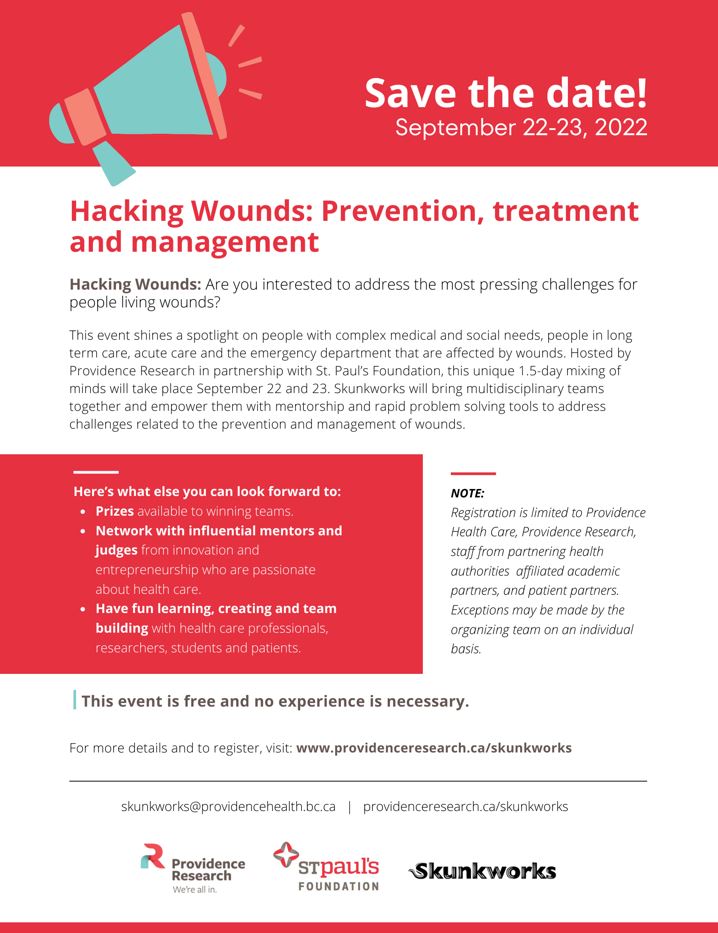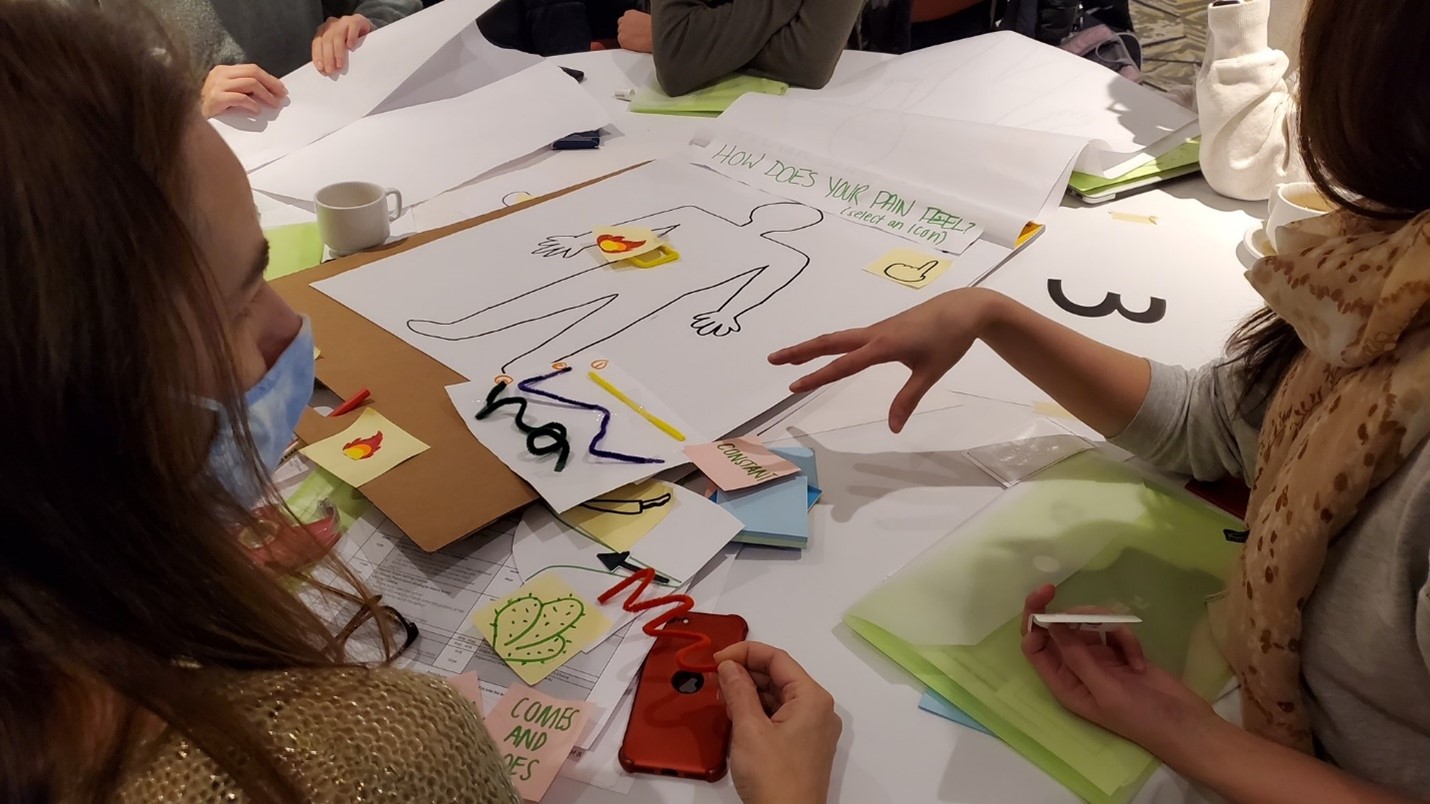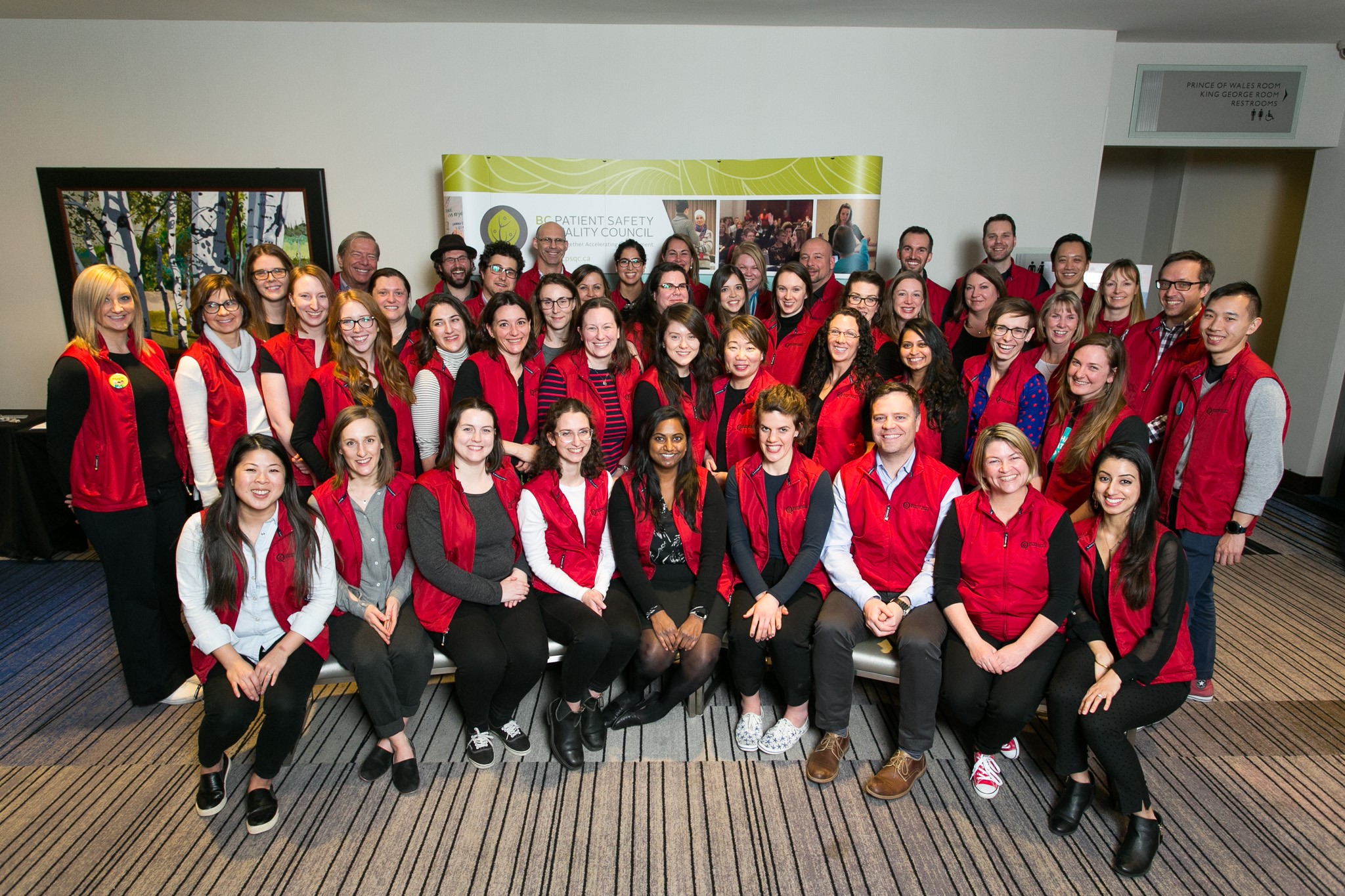Posted • Last updated
Categories: Improving Health Care, Patient Voice Mail, Working Together for Better Health Care
“We need to think differently!” “We need to step outside the box!” “We need creative solutions!” These are common declarations in response to persistent and widespread problems. What’s less common is a high-impact example of such innovation in action.
Enter Skunkworks. It’s an approach to problem-solving that assembles multidisciplinary teams and empowers them with mentorship and tools to tackle big challenges and prototype solutions.
In November 2021, Providence Research and the St. Paul’s Foundation teamed up to plan and host Skunkworks: Hacking Pain, a two-day event where researchers, clinicians, academic partners, patients/residents, students and the broader community put their heads together to address pain with innovative ideas.
“The event helped to underscore a particular Providence tradition of putting people in the greatest need at the centre of our research priorities,” shared Josephine Jung, Manager, Special Projects and Strategy. The Skunkworks event focused on pain, given its widespread prevalence and significant impact on quality of life. It is currently estimated that over seven million, or one in four Canadians, live with chronic pain.[1]
Skunk-what?
Skunkworks. The term originated in the 1940s as an alias for an American engineering lab that worked on top-secret and innovative programs at Lockheed Aircraft Corporation. Today, the word “skunkworks” describes a project developed by a loosely structured group of people who identify issues and pilot creative solutions.[2]
Josephine’s team hoped the event would help to develop and facilitate a culture of innovation at Providence Health Care. They saw Skunkworks as a creative way to address a complex local problem with global relevance. They also hoped it would break down silos and help to bridge the gap between diverse individuals and disciplines.
How Did It Work?
Prior to the event, registered participants were invited to submit “problem ideas” regarding either the physiological or psychological aspects of pain, including the dynamics of pain, causes and alleviation of pain and/or treatments to prevent or mitigate pain. On day one of the event, ~75 participants gathered at the Holiday Inn in Vancouver. The group included patients, doctors, nurses, pharmacists, occupational therapists, physical therapists, designers, engineers, data analysts, computer scientists, project managers, administrators and students from many disciplines. The “problems” were presented and teams were formed as people gravitated toward the problems that best suited their interests, technical skills or personal experiences.
From there, teams worked through the design process under the guidance of facilitators from the Alberta Health Services Design Lab and other mentors in the room. By the end of two action-packed and energetic days, the teams presented their prototyped solutions to a panel of judges and prizes to advance winning ideas were awarded.
Patient Partners’ Perspectives
Two PVN patient partners were recruited to help ensure the event was designed and conducted with patients, families and caregivers at its core.
“It was important to have patient partners involved and participating – to hear their lived experiences, to go through the process of working with interdisciplinary professionals and having that interaction and bidirectional learning happening,” shared Josephine.
Patient partner Kristie Nicol was keen to get involved due to her own experience with chronic pain but also her passion for innovation and creation.
“While I don’t expect my pain to ever be at zero, I know there is opportunity and possibility for change, and that comes from looking at things differently – not going with the status quo. What really appealed to me about this event was bringing together people who were open and willing to think differently. I think that is what the world – and health care – needs. We’ve been doing a lot of the same things over and over again, so let’s change it up!”
As a steering committee member, Kristie attended planning meetings to iron out details and tighten up the project’s framing.
“Along the way, Josephine would bounce ideas off of me, and I reviewed and edited public-facing documentation to make sure the patient voice – the user, the audience – was always at the center,” she shared.
At the event, Kristie contributed as a judge, and a mentor, drawing from her knowledge as a patient with chronic pain and her technical communications background to coach teams through their design efforts.
“I walked around, sat with different groups, they asked me questions, I provided some feedback, advice and comments,” she recollected.
Kristie knew that solutions would only stick if they were based on a solid understanding of and empathy for the experiences and emotional needs of patients. As a mentor, it was important for her that participants really understood the needs and realities of the end-users they were designing for.
“I think I was able to provide more insight into what it is like to live with chronic pain and the many challenges and barriers we face. People came to Skunkworks with ideas and skills, and with enthusiasm and openness, which is so important, but they really needed to understand the audience first. I was able to come to the tables and say, ‘Great idea, but how is this going to work for someone with cognitive challenges because of pain?’ Digging into some ideas and making them a little more realistic for people,” she shared.
The most meaningful and challenging part of the event for Kristie was helping teams consider that trust is often a barrier for people with chronic pain. Past experiences with the health system may affect their willingness to engage in a new way.
“I wanted people to understand that we [people with chronic pain] are often revictimized when we go to appointments: not being treated with respect, our problems are dismissed, sometimes we are lied to, some people have struggled with employment conditions, or with their family and friends when turning there for support. Trust is lacking for a lot of people. For me, it was meaningful that I could highlight the fact that you have to start with trust – whether in a relationship or interaction with a doctor or with an app or website. How do you build trust? And what does trust look like for someone who has been repeatedly traumatized in different aspects of their life? How do you reach them? How do you provide hope and respect their experiences?”
Kristie shared that the approach, tact and diplomacy needed to dive into those conversations wasn’t always easy.
“It was a bit tough to say, ‘No, you’re starting in the wrong spot,’ and telling people to step back and think about the user. You know, asking teams, ‘Who is your audience? Who are you working for? What is in it for that patient, person, family member or caregiver? How do we build trust for them?’ When you’re dealing with people who have chronic pain, you need to be objective but also emotional. Behavioural change is challenging, but if people don’t feel comfortable in an interaction or situation, they are not going to change,” she explained. “So, finding ways to politely bring some assumptions down to reality was a bit tricky,” she added.
While challenging, it seemed as though her message was well received and took root.
“You could see the groups, the people I interacted with, knowing how their conversations started on Friday morning, how by Saturday, words had softened, and how they really got the problems and people they were designing for.”
Putting Prototyped Solutions into Action
At the end of the event, the Research Impact Award, which came along with a $15,000 prize to advance the idea, went to the team that developed the ADAPT (Accelerate Distance Access to Pain Treatment) app to help people living with pain in rural and remote communities to access treatment and services more easily. From January to April 2022, the team worked with students from the Centre for Digital Media to produce a functional prototype, now called PEPITA, that delivers a personalized experience to the user by curating a list of chronic pain management resources that meet the users’ specific needs. Providence Health Care Ventures and Providence Research will be reviewing the next steps.
The Service Innovation Award went to a team that developed LOOP: a web-based clinical concept to support youth aged 18-24 who have aged out of pediatric care and need support navigating treatment and care services. Miranda Tymoschuk, another PVN patient partner, was a member of this winning team! Since the event, discussions with Foundry have been underway to explore partnership opportunities.
Advice for Health Care Teams
When asked if they had advice for health care teams embarking on patient engagement work, Josephine suggested to “be really clear on what your goals on, and what you seek from them, to make sure their time is well used.” Kristie echoed the importance of clear goals and expectations and added “to make sure it’s working along the way. Make sure there is a meaningful relationship there. Think about how to build trust!”
“I really enjoyed working with Josephine and the team. It was a really fun opportunity to see the whole project go from start to finish! I hope there can be more opportunities like this,” said Kristie.
Next Steps: Skunkworks Round 2!
The team will be hosting its second Skunkworks event on Sept 22-23, 2022, seeking innovative solutions related to wound prevention and care. Interested to learn more and possibly attending? Visit www.providenceresearch.ca/skunkworks or email skunkworks@providencehealth.bc.ca.

Watch a 4-minute Video of the Event
This story was featured in our 2021/22 Annual Report.
[1] https://www.canada.ca/en/health-canada/corporate/about-health-canada/public-engagement/external-advisory-bodies/canadian-pain-task-force/report-2020.html
[2] https://www.providenceresearch.ca/skunkworks
Author: Kira Tozer, Leader, Strategic Initiatives, Patient & Public Engagement


